The Department of Education has released its international student data for the 2019 calendar year, which reveals that total international students enrolments hit an all-time high 957,000:
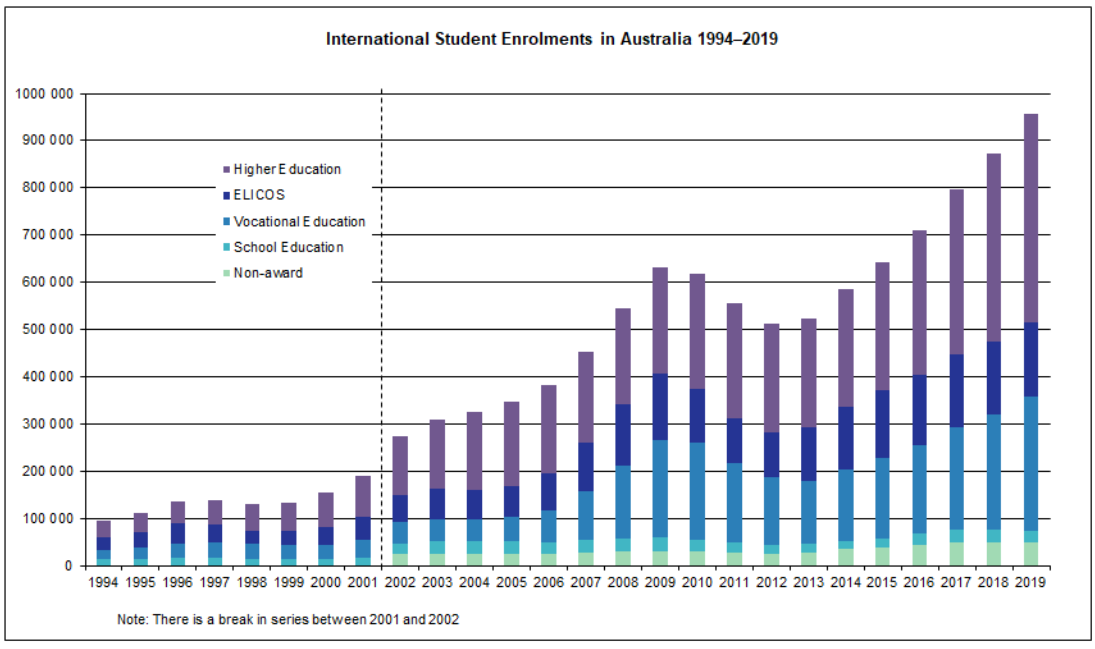
Total international student enrolments rose 9.7% from 2018 and have increased roughly ten-fold from 1994.
As shown in the next chart, China (261,000) remained Australia’s largest source of international students, followed by India (144,000) and Nepal (69,000):
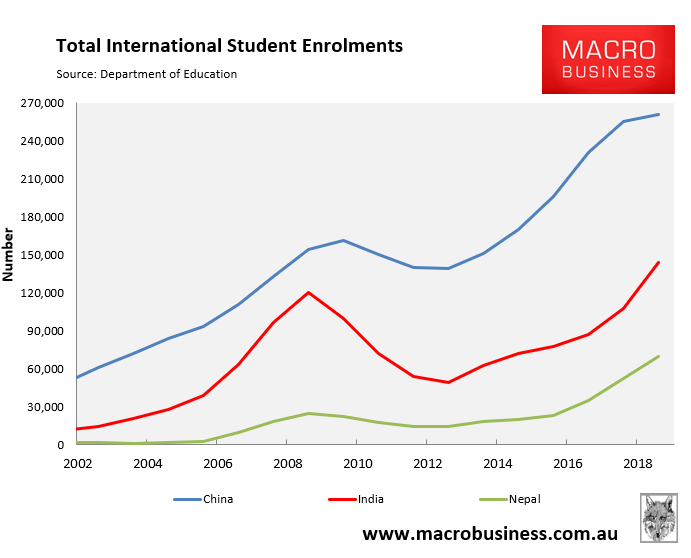
However, Nepal is now Australia’s fastest growing major market, growing by more than 200% over the past three calendar years:
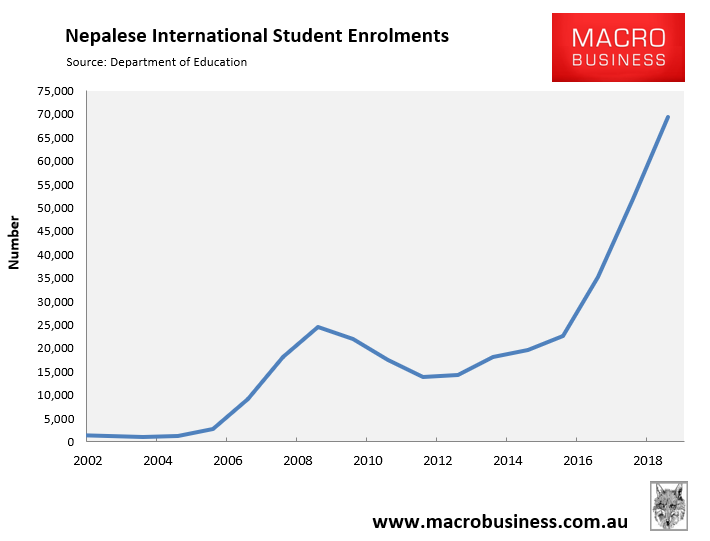
New enrolments from Nepal have also exploded by around 190% over the past three calendar years:
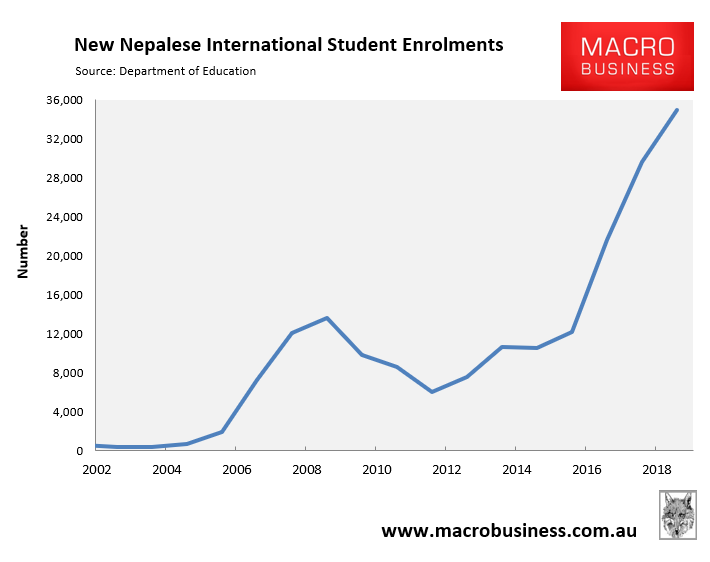
As shown in the next chart, the growth in Nepalese international students has been driven by both the university (higher education) and VET sectors, whose enrolments have ballooned by 130% and 490% respectively over the past three calendar years:
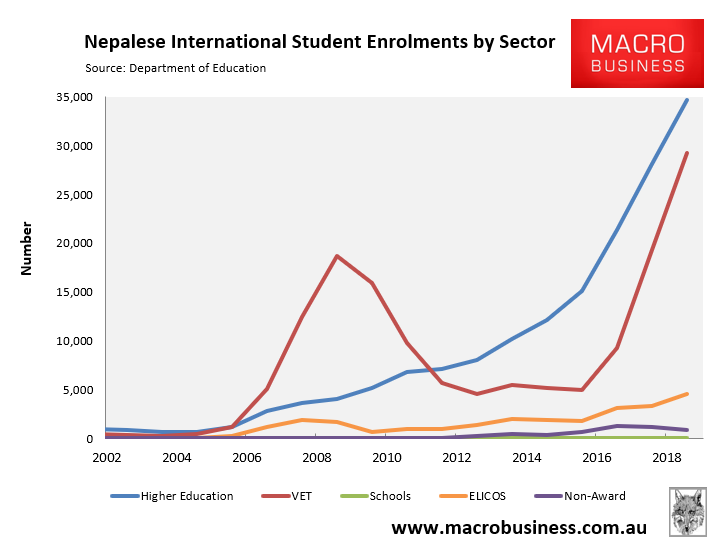
Finally, most Nepalese international students have gone to New South Wales, where enrolment numbers have ballooned by 215% since 2016, accounting for nearly two-thirds of total Nepalese student enrolments:
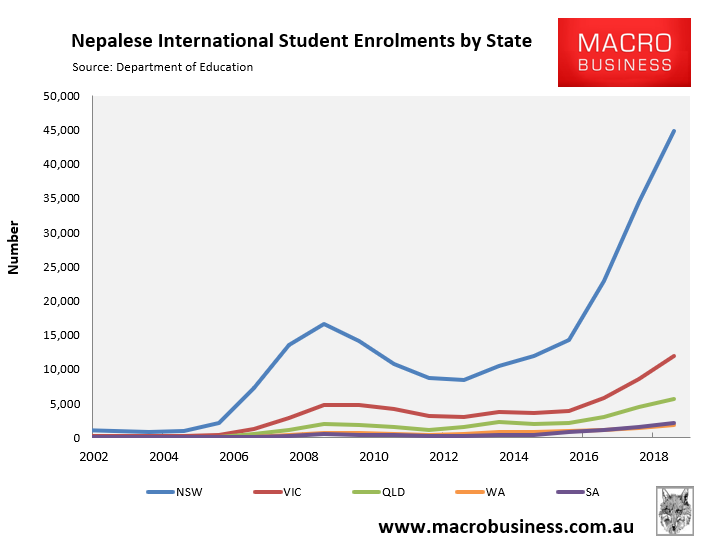
The explosive growth in Nepalese international students raises concern over whether Australia’s universities have further dropped entry and teaching standards to drive the student growth.
Recently, education experts warned that dodgy education agents have driven the surge in Nepalese students, offering the carrot of gaining work rights and permanent residency:
The number of education agents – or recruiters – operating in Nepal has leapt from a few hundred to more than 3000… About half the Nepalese students enrolled in vocational education and training or English language courses.
The trend has alarmed higher education experts, who warn it is unlikely the students can genuinely afford to study in Australia, and are likely involved in exploitative work to pay for their tuition…
Andrew Norton, professor of higher education policy at the Australian National University, said the Nepalese influx should be “red-flagged” by the Department of Home Affairs.
“Nepal is a country with a not-very-large population and it is very poor,” he said. “You have these basic questions of how so many people can afford to come to Australia and afford education here”…
Professor Norton said Nepalese international students had “an extremely high number” of secondary applicants on their visas, “suggesting to me that maybe they’re bringing in their spouses to work”…
In a similar vein, Tim Colebatch last year questioned why so many Nepalese are coming to Australia given Nepal is so poor, shares no cultural ties with Australia, and does not speak English:
In 2017–18, one in every 1500 inhabitants of Nepal emigrated to Australia. In an era of strict immigration controls, that is an astonishing number for two countries so far apart, with no common language, heritage or ethnicity…
Deregulation has allowed universities to selectively lower their standards to bring in more fee-paying foreign students, even when they fail to meet the thresholds for English language skills or academic achievement…
This is not the first time immigration from Nepal has surged. A decade ago, we saw a scam with training visas, in which “students” from India and Nepal came for training courses in Australia, then quickly vanished into the workforce. The scam saw net immigration set record levels in 2008–09, before then immigration minister Chris Evans shut it down. But most of those who came stayed on here.
Obviously, Nepalese are gaming Australia’s education system for backdoor immigration into Australia. This is being facilitated by our higher education industry, which has slashed entry and teaching standards to accommodate them, and have effectively become ‘middle-men’ to Australia’s immigration system.
The situation is likely to worsen as Australia’s universities cut entry and teaching standards even further to fill the hole left by falling Chinese international student enrolments in the wake of the coronavirus.

